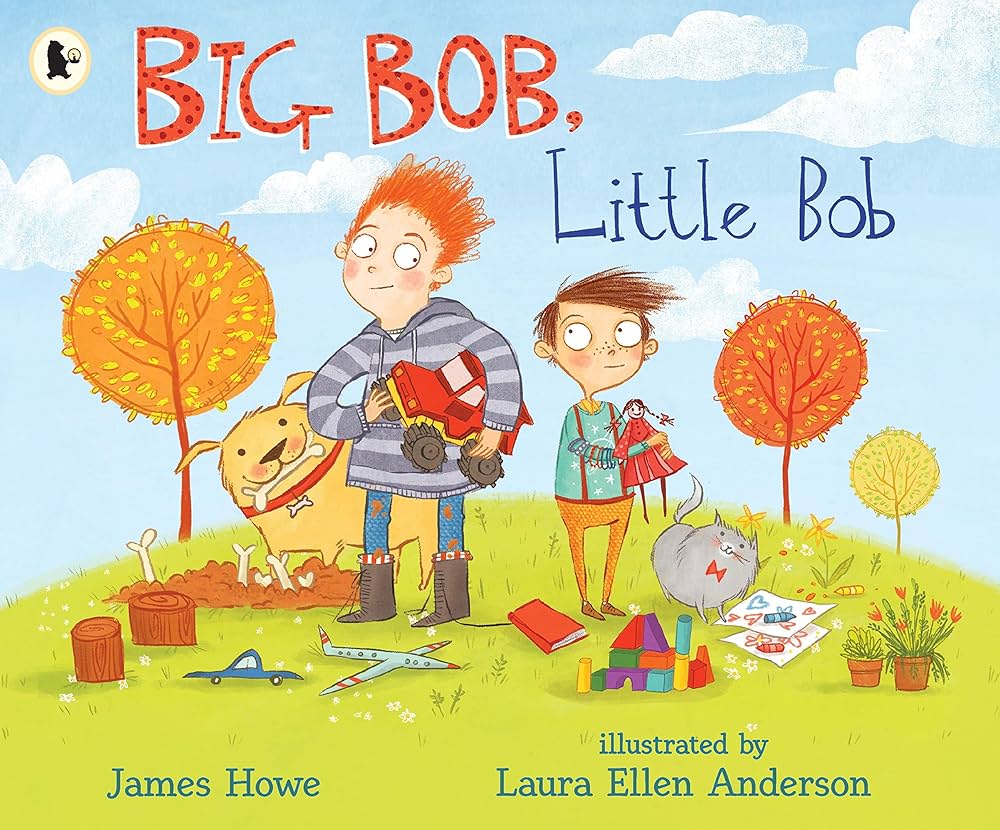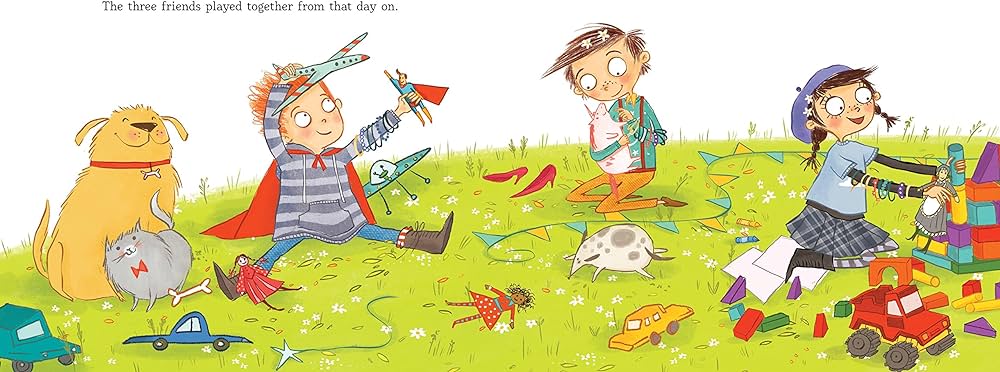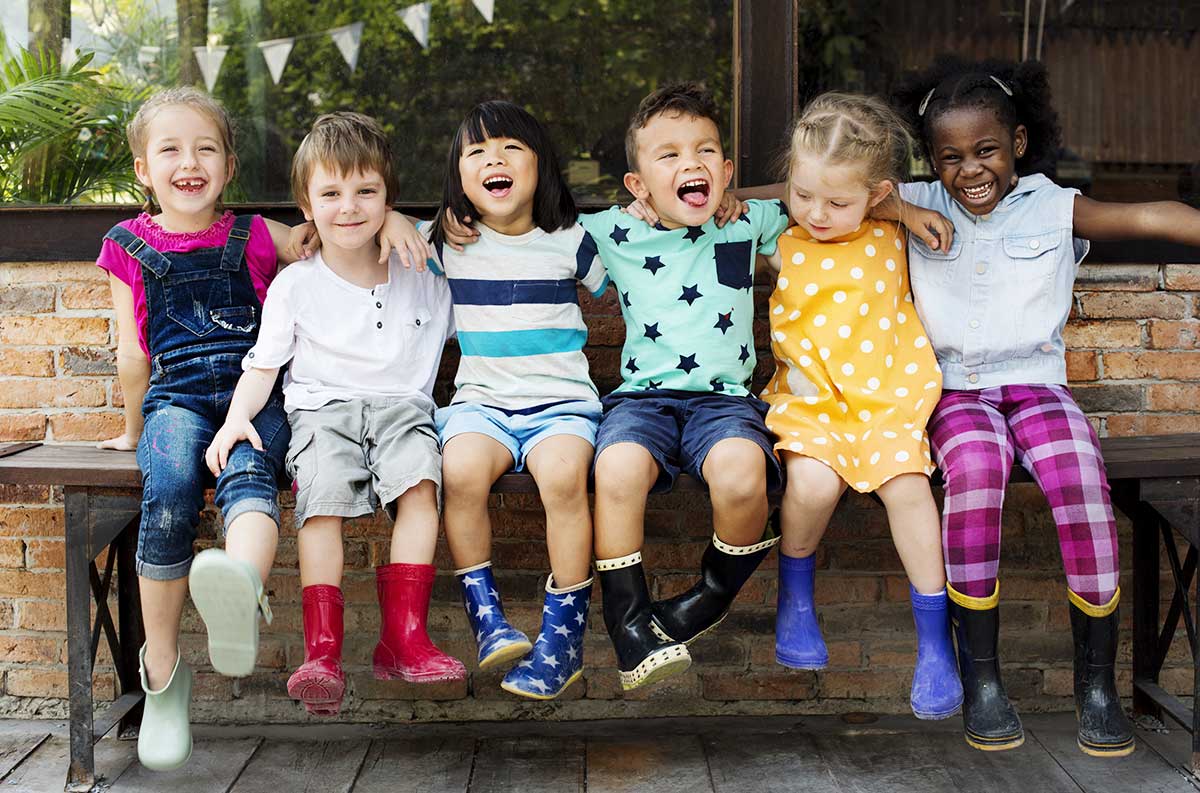
Inclusive Children's Book Teaching Guide
Big Bob, Little Bob
What is this book about?
Despite the fact that they share a name, Big Bob and Little Bob are different. Big Bob likes trucks and throwing balls and being loud. Little Bob likes dolls and jingly bracelets and being quiet.
Can Big Bob and Little Bob be friends despite these differences? It’s not easy to become friends with someone who is different from you, but surprising things can happen when you give it a try.
With humor and tenderness, James Howe and Laura Ellen Anderson depict the struggles and rewards that children experience when they forge friendships with peers who have different personalities and interests.
Who is depicted in this book?
- Characters who transcend (or learn to accept) gender stereotypes regarding dress and toy preferences
What early childhood themes and concepts does this book explore?
- Same and different
- Friendship, including how friendships can form among children with different personalities and interests
- Various forms of play that are often stereotyped by gender, and how these ideas change
- How we can stand up for friends if they are picked on
How does this book support anti-bias education?
Big Bob, Little Bob depicts two children who express their genders and interests in very different ways. As they get to know one another, a friendship blossoms. As the story unfolds, it shows how children can demonstrate sensitivity and care when supporting gender-diverse peers.
Depending on how the book is shared or used—and the developmental level of the children—Big Bob, Little Bob may be used to support the following core goals from Anti-Bias Education for Young Children and Ourselves:
Diversity—Teachers will promote each child’s comfortable, empathetic interaction with people from diverse backgrounds so that children will express comfort and joy with human diversity, use accurate language for human differences and form deep, caring connections across all dimensions of human diversity.
How can this book be used to meet early childhood learning standards?
For all ages
Use Big Bob, Little Bob to meet early childhood literacy standards
For children from birth to age three
Teaching suggestion: Point out the toys, actions and various familiar settings that children can react to, point at, or name.
What Illinois Early Learning Guideline does this meet for children from birth to age three?
Developmental DomainSocial-Emotional Development
Standard: Relationship with PeersChildren demonstrate the desire and develop the ability to engage and interact with other children.
Indicators for children:
- Begins to engage in parallel play, in closer proximity to other children but no interaction is attempted (7–18 months)
- Begins to engage in simple reciprocal interactions, such as rolling a ball back and forth (16–24 months)
- Demonstrates a preference for select peers (21–36 months)
Teaching suggestion: As you explore this book, point out the emotions depicted in the illustrations and help the children understand why the characters feel the way they do. For instance, you can say: "Oh no, Little Bob is sad because his toys got knocked over” or “Little Bob is happy reading a book, just like us!" You can also model the emotion depicted in the illustration.
For preschoolers (ages three to five)
Teaching suggestion: Big Bob and Little Bob have very different interests and preferences about play and dress. Talk with the children about some of the ways that children can be similar and different. Can they name some things that Big Bob and Little Bob both like to do?
What Illinois Early Learning and Development Standards does this meet for preschoolers?
Social Studies Standard18AExplore people, their similarities and their differences.
Benchmark 18.A.ECa:
Recognize similarities and differences in people.
Teaching suggestion: Encourage children to identify the feelings that Little Bob experiences as Big Bob plays and things get messy or broken.
What Illinois Early Learning and Development Standards does this meet for preschoolers?
Social/Emotional Development Standard30AIdentify and manage one’s emotions and behavior.
Benchmark 30.A.ECa:
Recognize and label basic emotions.
Teaching suggestion: Talk about that ways that Big Bob supports and protects Little Bob when Blossom shows up and questions his choices.
What Illinois Early Learning and Development Standards does this meet for preschoolers?
Social/Emotional Development Standard31ADevelop positive relationships with peers and adults.
Benchmark 31.A.ECa:
Show empathy, sympathy, and caring for others.
Benchmark 31.A.ECe:
Develop positive relationships with peers.
Teaching suggestion: Talk about how people sometimes say that certain toys are only for certain people—and why they might believe this. Discuss how the children can show respect and support for one another’s choices and preferences.
What Illinois Early Learning and Development Standards does this meet for preschoolers?
Social/Emotional Development Standard31ADevelop positive relationships with peers and adults.
Benchmark 31.A.ECb:
Recognize the feelings and perspectives of others.
Benchmark 31.A.ECe:
Develop positive relationships with peers.
See inside this book.


